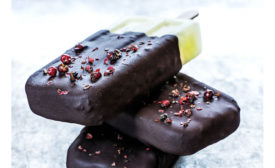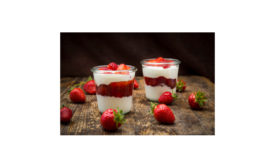Home » ingredient news
Articles Tagged with ''ingredient news''
Ingredient news
Florals, herbs, spices, tea and ginger flavors and extracts are now available for contemporary product concepts.
Read More
Supplier news
Frutarom acquires AB-Fortis, a micro-encapsulation iron
The micro-encapsulation technology enables delivery of iron with increased biological absorption.
December 20, 2017
Ice cream flavors
Parker Products launches 2018 feature flavors for ice cream
The flavor combinations feature a unique twist to on-trend dessert flavors.
December 18, 2017
Dairy supplier news
Ingredion for Emerging Business to help start-up food and beverage manufacturers
Emerging food, beverage companies now have a new entrepreneurial partner to help turn their ideas into scalable products.
December 12, 2017
Frozen desserts balance virtue and vice
But taste still reigns supreme in this indulgent category
December 5, 2017
State of the Industry 2017: Dairy ingredients get back to basics
On the ingredient front, the class of 2017’s MOST LIKELY TO SUCCEED are multitaskers that do more with less.
November 15, 2017
IFT dairy supplier news
Dairy supplier news from the IFT Show
Ingredient suppliers won awards, announced name changes and other dairy supplier news from the IFT Show in Las Vegas in June.
July 19, 2017
Dairy supplier news
Dairy supplier news from DuPont Nutrition & Health, Ingredion, Tetra Pak and more
February 24, 2017
Make the most of milkfat ingredients
Consumers’ perception of full-fat dairy products is changing as research gives a new appreciation for milkfat ingredients.
January 6, 2017
State of the Industry 2016: Ingredients will come clean in 2017
Clean-label formulation can’t come at the expense of functionality. Those in the R&D lab need to consider the ramifications of swapping out traditional ingredients for alternatives.
November 21, 2016
Stay ahead of the curve. Unlock a dose of cutting-edge insights.
Receive our premium content directly to your inbox.
SIGN-UP TODAYCopyright ©2025. All Rights Reserved BNP Media.
Design, CMS, Hosting & Web Development :: ePublishing










